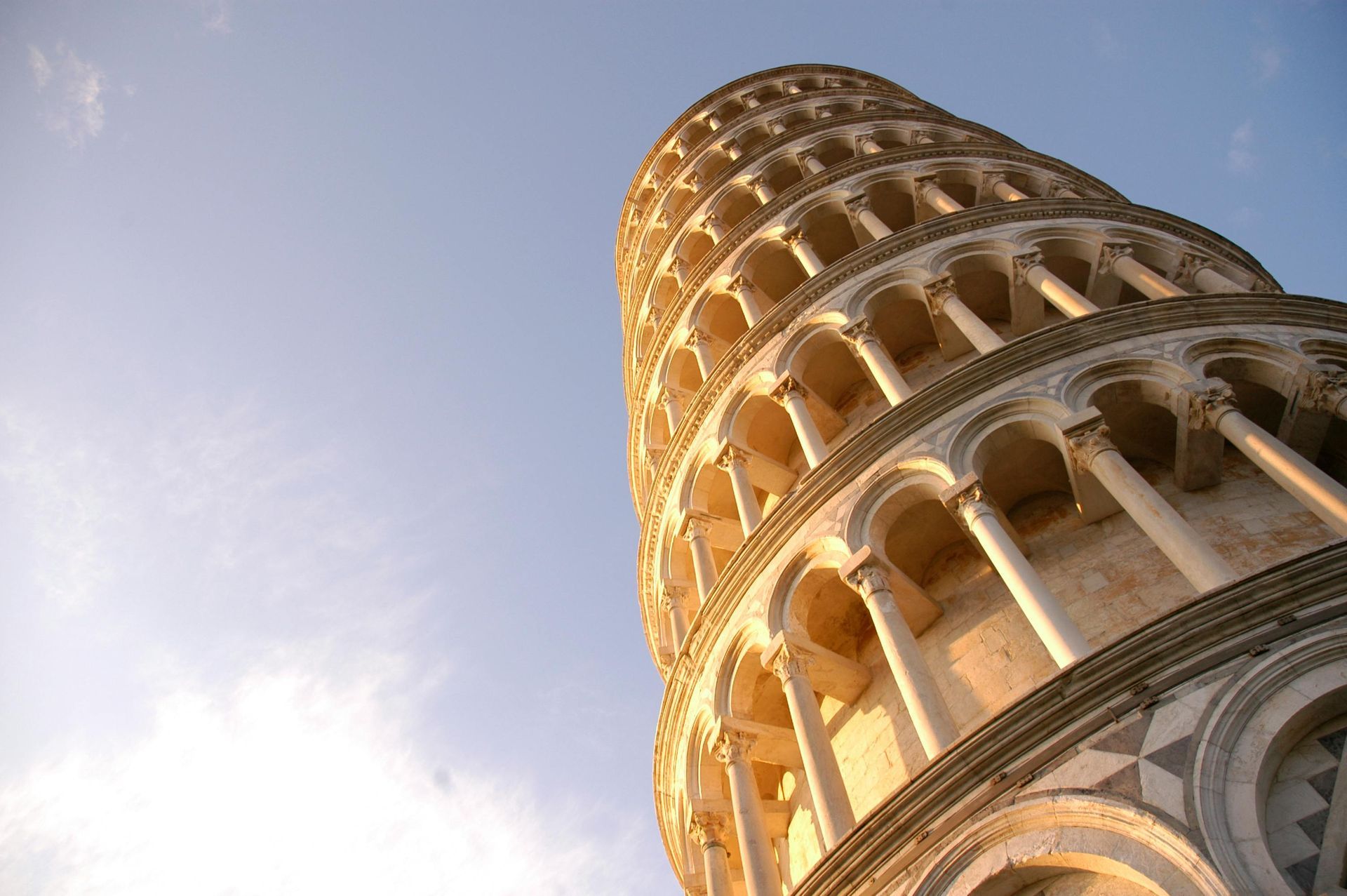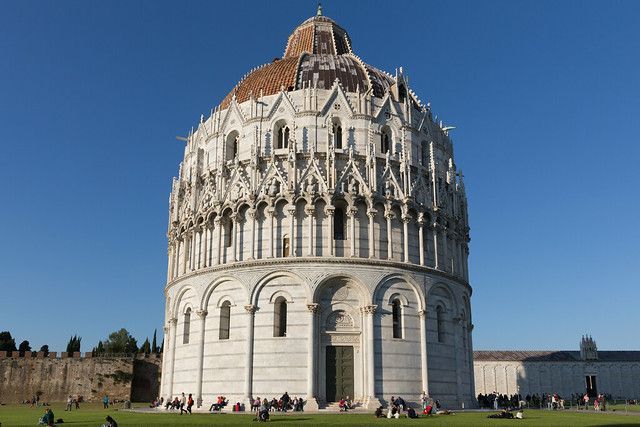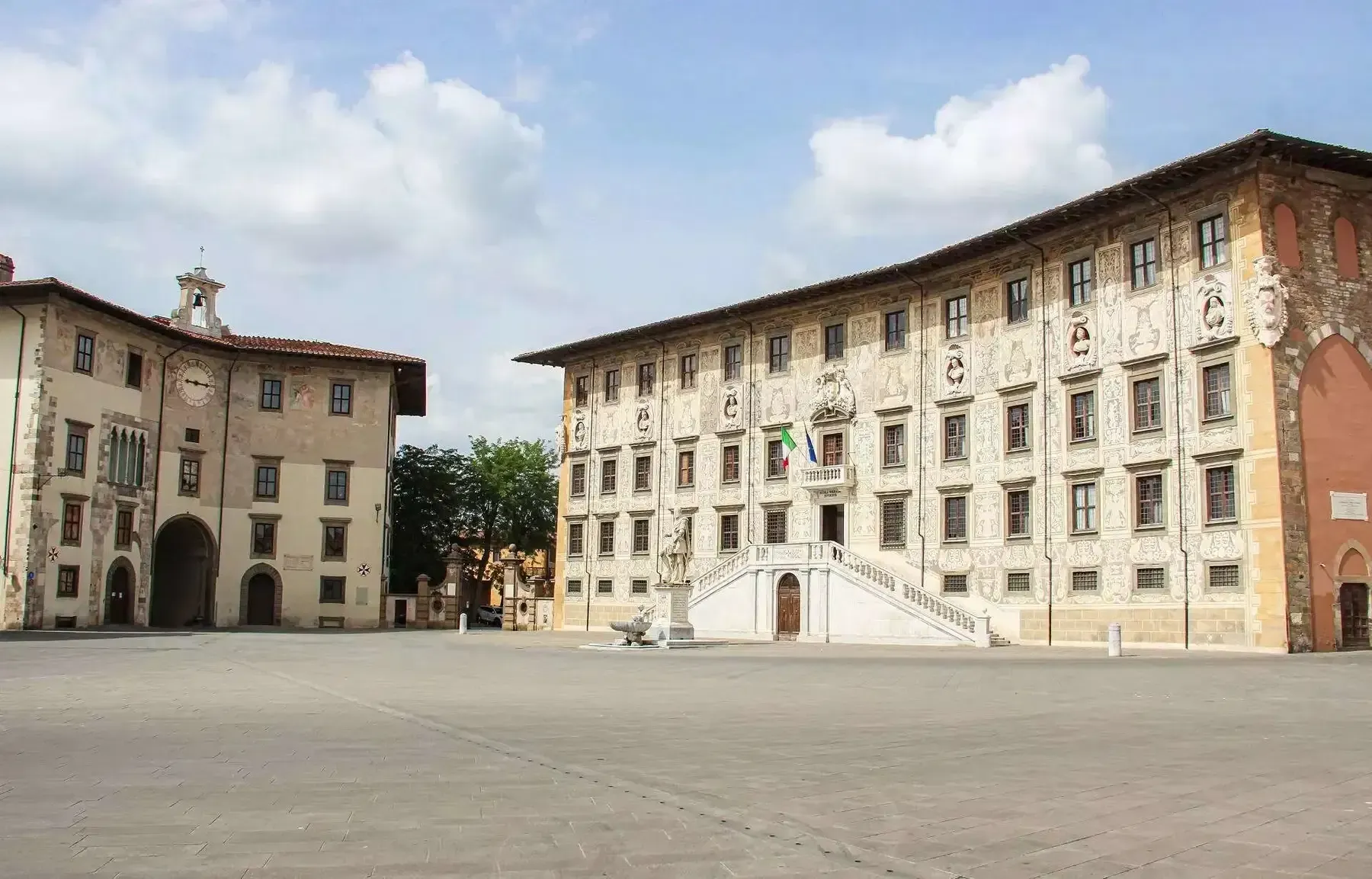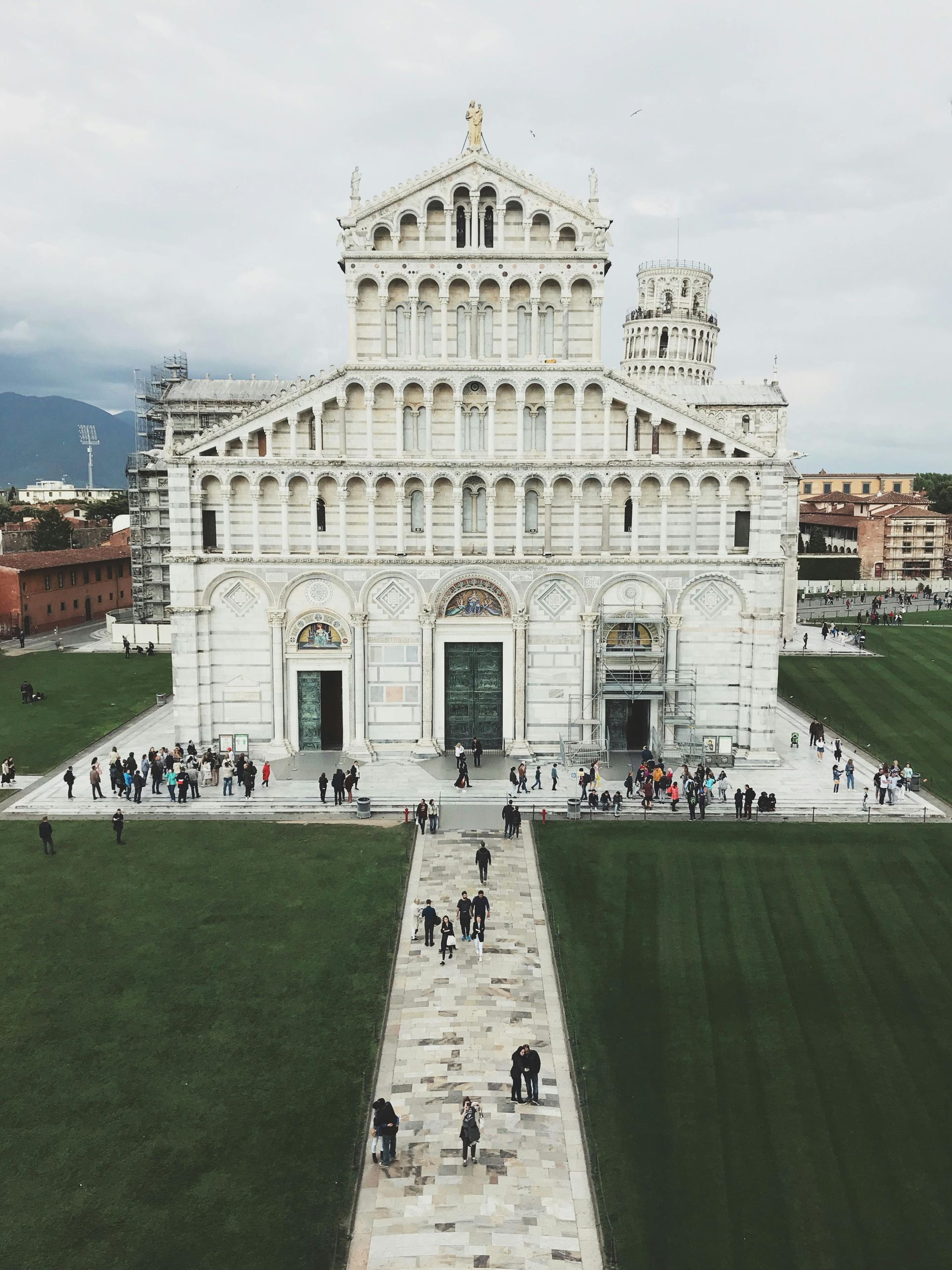THE CHURCH OF THE SPINE
A Delicate Relic of Faith and Medieval Craftsmanship
Built in 1230 by the Gualandi family, this chapel was originally called Santa Maria di Pontenovo after the bridge linking Via Sant’Antonio to Via Santa Maria, which collapsed in the 15th century. Its name “Spina” (“thorn”) derives from a relic it once housed—a thorn said to be from the crown placed on Christ at his crucifixion, brought here in 1333, but since the 19th century kept in the Church of Santa Chiara.
Originally, the church consisted of a single open loggia facing south under a simple gabled roof. In 1322, the city council approved an enlargement, begun in 1323 and completed before 1376, likely under the direction of Lupo di Francesco and his workshop, later succeeded in the mid-14th century by Andrea and Nino Pisano.
The façade is framed by three triangular pediments decorated with rosettes and tarsia. Within small niches sit the statues of the Annunciation (to either side) and the Redeemer—works of the school of Andrea Pisano—while the central niche holds Giovanni Pisano’s Madonna and Child with Angels. Along the side elevation runs a gallery of statues of Christ and the Apostles by Giovanni Pisano, mirrored by additional figures on the eastern face. Atop the steep pyramidal pinnacles perches Nino Pisano’s Madonna with Child and Angels.
Inside, the single nave is adorned with bichrome bands. On the main altar stands Andrea Pisano’s Madonna della Rosa (1343–1348), flanked by Saints Peter and John the Baptist, sculpted by Nino and Tommaso Pisano. On the counter-façade is a replica of Andrea Pisano’s Madonna del Latte (1343–1348), a city icon whose original is now in the Museo Nazionale di San Matteo.
In 1871, architect Vincenzo Micheli, with approval from Pisa’s Accademia delle Belle Arti, dismantled and re-erected the church in its current location—a process that sparked fierce criticism. Stones were removed roughly, many sculptures were damaged, original statues and pinnacles were repositioned without accurate mapping, and the sacristy (formerly facing the Arno) was demolished and never rebuilt. The work, completed in 1884, also raised the church walls by one metre, placed it on three new steps, and replaced original carvings with casts. During his first visit to Pisa in autumn 1840, English writer and critic John Ruskin openly condemned this dismantling and reconstruction.














